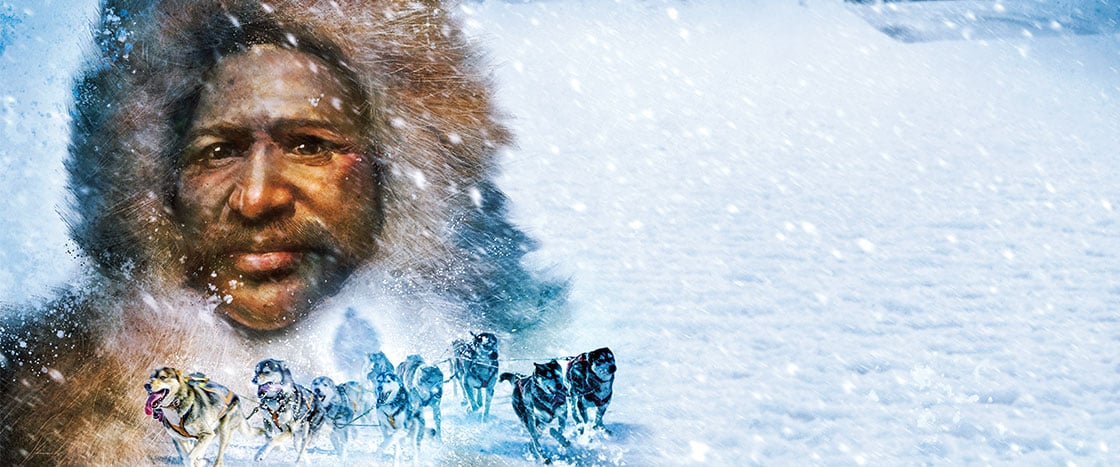It was April 3, 1909, and an American explorer named Matthew Henson was trudging across the ice-covered Arctic Ocean. This was a frozen wilderness, a land of brutal cold and blinding blizzards. No person could survive here for long. Even polar bears stayed away.
But a fiery excitement warmed Henson’s heart. He felt sure that he was just days from achieving his dream of being one of the first people to set foot on the North Pole.
Henson put his head down and pushed against the fierce wind. Suddenly, he lost his balance. The ice beneath his feet wobbled, and he tumbled into the ocean. The frigid water hit his skin like millions of needles.
The water seemed to grab him and pull him down. Henson had dedicated nearly 20 years of his life trying to get to the North Pole. And now it seemed it would all end here, in the icy blackness of the Arctic Ocean.
It was April 3, 1909. An American explorer named Matthew Henson was trudging across the Arctic Ocean. This was an ice-covered land of brutal cold and blinding blizzards. No person could survive here for long. Even polar bears stayed away.
But Henson was excited. In a few days, he hoped to achieve his dream of being one of the first people to set foot on the North Pole.
Henson put his head down and pushed against the fierce wind. Suddenly, he lost his balance. The ice beneath him wobbled, and he tumbled into the ocean. The frigid water hit his skin like millions of needles.
The water seemed to grab him and pull him down. Henson had spent nearly 20 years trying to get to the North Pole. And now it seemed it would all end here, in the icy blackness of the Arctic Ocean.


